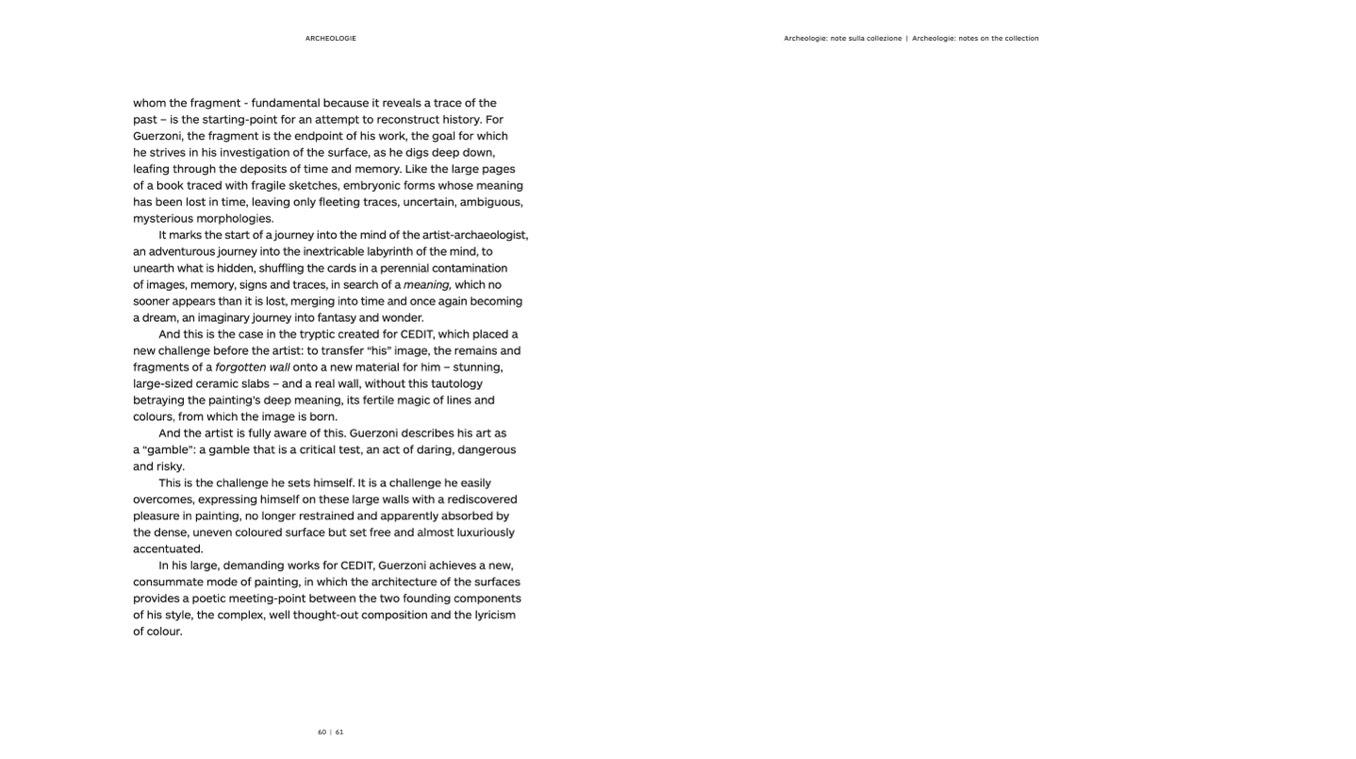
ARCHEOLOGIE
Archeologie: note sulla collezione | Archeologie: notes on the collection
whom the fragment - fundamental because it reveals a trace of the
past – is the starting-point for an attempt to reconstruct history. For
Guerzoni, the fragment is the endpoint of his work, the goal for which
he strives in his investigation of the surface, as he digs deep down,
leafing through the deposits of time and memory. Like the large pages
of a book traced with fragile sketches, embryonic forms whose meaning
has been lost in time, leaving only fleeting traces, uncertain, ambiguous,
mysterious morphologies.
It marks the start of a journey into the mind of the artist-archaeologist,
an adventurous journey into the inextricable labyrinth of the mind, to
unearth what is hidden, shuffling the cards in a perennial contamination
of images, memory, signs and traces, in search of a meaning, which no
sooner appears than it is lost, merging into time and once again becoming
a dream, an imaginary journey into fantasy and wonder.
And this is the case in the tryptic created for CEDIT, which placed a
new challenge before the artist: to transfer “his” image, the remains and
fragments of a forgotten wall onto a new material for him – stunning,
large-sized ceramic slabs – and a real wall, without this tautology
betraying the painting’s deep meaning, its fertile magic of lines and
colours, from which the image is born.
And the artist is fully aware of this. Guerzoni describes his art as
a “gamble”: a gamble that is a critical test, an act of daring, dangerous
and risky.
This is the challenge he sets himself. It is a challenge he easily
overcomes, expressing himself on these large walls with a rediscovered
pleasure in painting, no longer restrained and apparently absorbed by
the dense, uneven coloured surface but set free and almost luxuriously
accentuated.
In his large, demanding works for CEDIT, Guerzoni achieves a new,
consummate mode of painting, in which the architecture of the surfaces
provides a poetic meeting-point between the two founding components
of his style, the complex, well thought-out composition and the lyricism
of colour.
60 | 61

